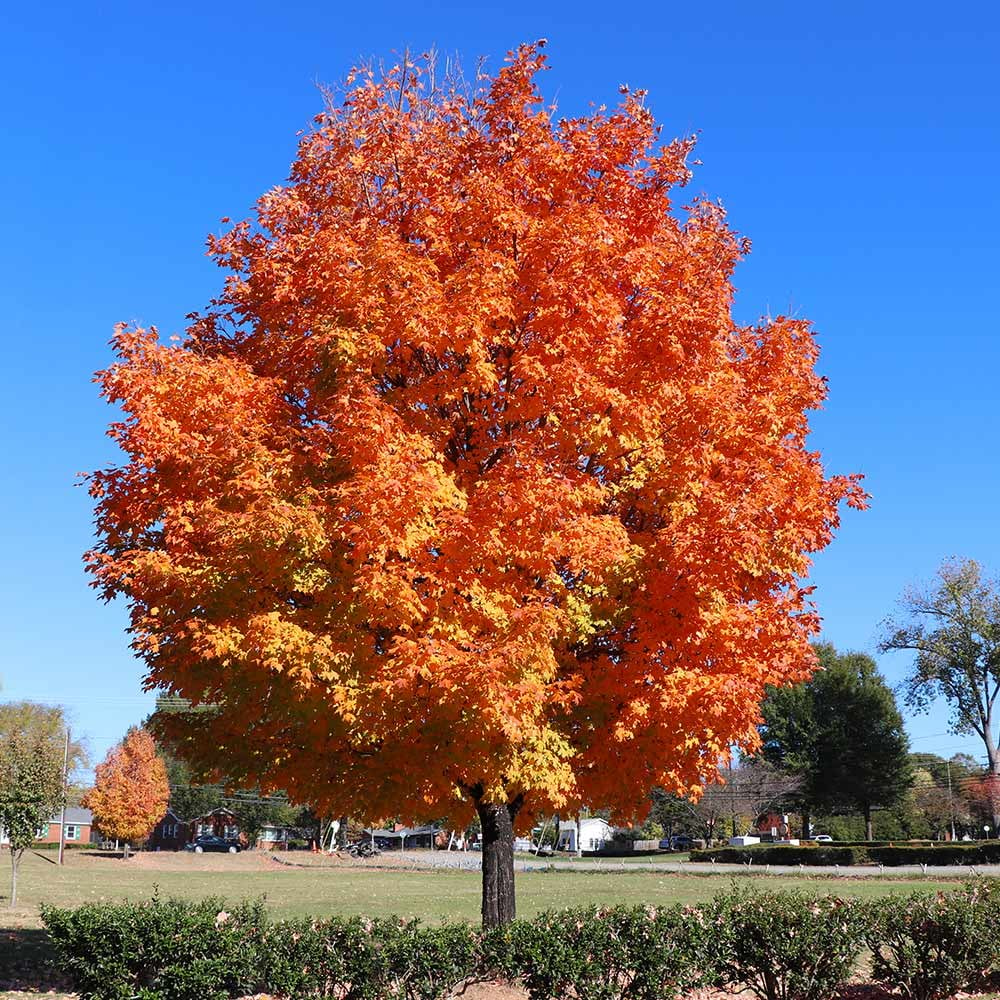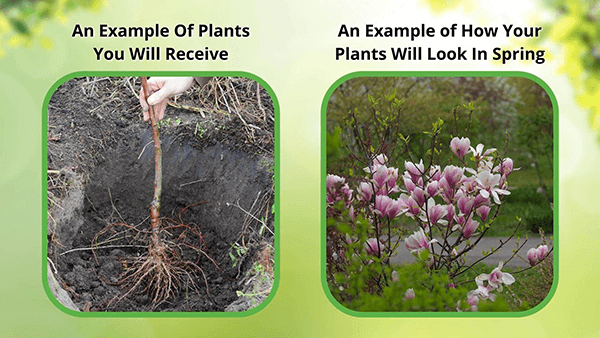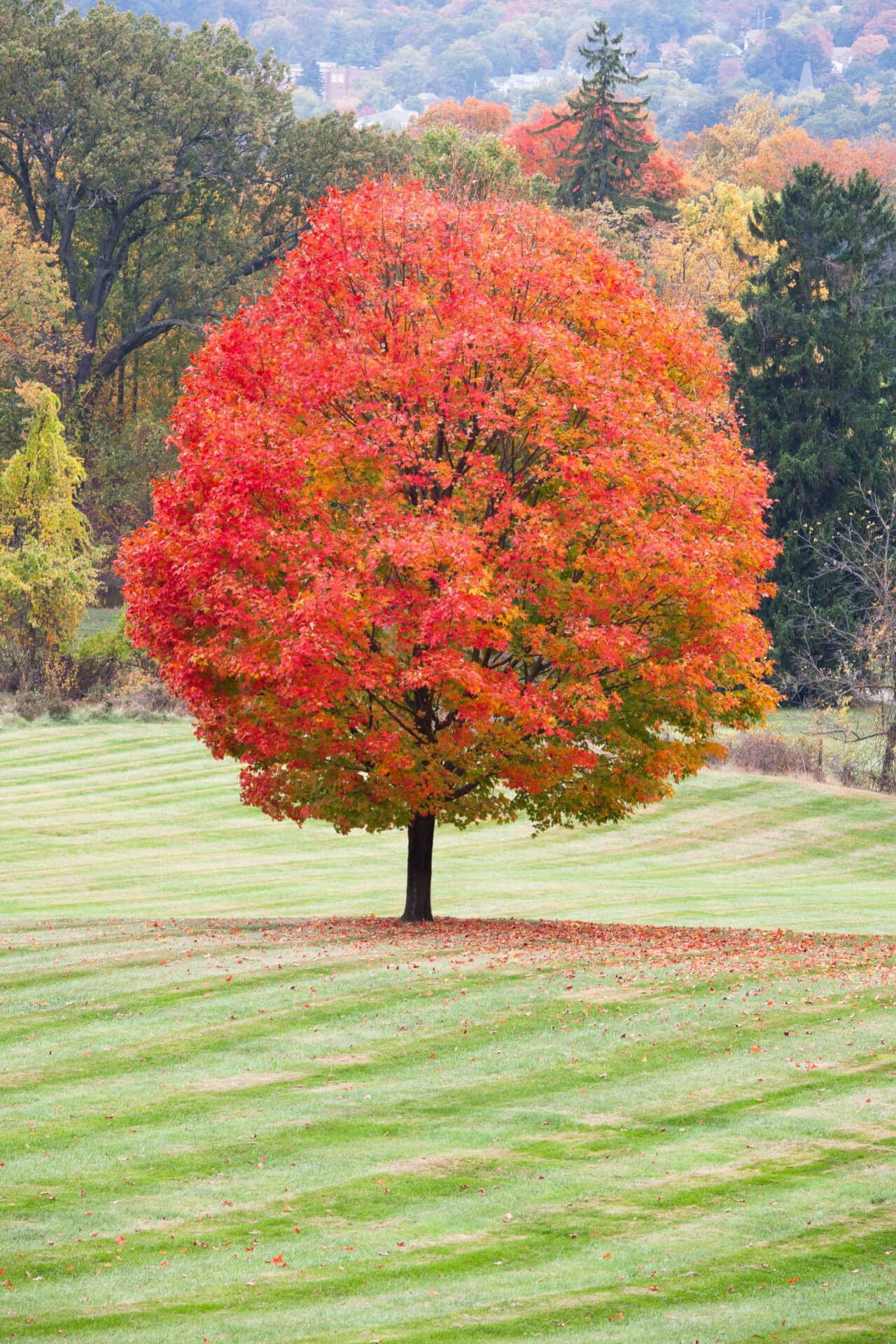



Sugar Maple Tree
This plant ships:
NowWe sell bare root plants - click here to see what you'll receive
Sugar Maple Tree: Acer Saccharum
The Sugar Maple Tree (Acer saccharum) is a handsome type admired for its thick canopy, autumnal colors, and applications. Because of its beautiful appearance and versatility, it is the ideal type for homeowners who wish to add a touch of class and shade to their backyard.
Sugar Maple Tree's Ease of Planting and Maintenance
They are easy to plant and is a popular choice among gardeners of all types. These are very hardy and prefer well-drained soil in full sun to partial shade. Put the root ball in a hole twice its diameter, place the tree, and add soil and water. Once planted, they need little maintenance. Its advantages include drought tolerance, insect resistance, occasional irrigation when wet, and annual mulching to conserve moisture.
Acer Saccharum's Seasonal Blooms and Color Changes
They have tiny, yellow-green flowers in spring that make the garden look pretty. During the summer, the green leaves provide thick shading to keep you cool and fresh. Its canopy of leaves turns into a riot of warm colors, such as red and orange, during the fall season and is a stunning feature of any garden or yard. It remains dormant in winter, the entirety of its spanning branches visible beneath.
They are round-shaped, with a thick canopy. They range from 60 to 75 feet tall and 40 to 50 feet wide. If appropriately maintained, these can live for over 100 years and become a beloved feature in your garden.
Life Cycle of Sugar Maple Trees at TN Nursery
The Sugar Maple Trees at TN Nursery are grown in high-quality conditions and delivered as ready-to-plant specimens. These grow quickly and offer stunning seasonal color, shade, and durability. Plant one in your garden to give your home years of timeless beauty!
| Planting zone | [3, 4, 5, 6, 7, 8] |
|---|---|
| Height At Maturity | Over 25 Feet |






Sugar Maple Tree
This plant ships:
Now| Planting zone | [3, 4, 5, 6, 7, 8] |
|---|---|
| Height At Maturity | Over 25 Feet |

